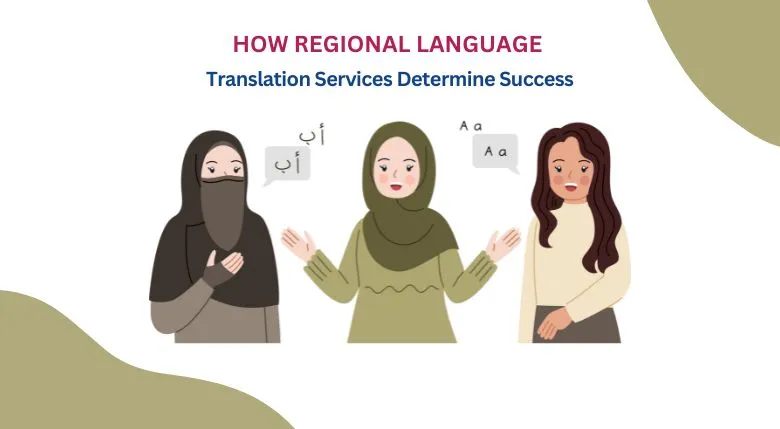 India is a multilingual and culturally diverse country with 22 official languages recognized in the constitution. Additionally, there are 19,000 unique dialects spoken by the people of the country. Businesses and institutions are increasingly realizing the importance of regional Language Translation Services. While English and Hindi have an important place in establishing communication between people and institutions, the regional languages hold immense value in connecting with local audiences.
India is a multilingual and culturally diverse country with 22 official languages recognized in the constitution. Additionally, there are 19,000 unique dialects spoken by the people of the country. Businesses and institutions are increasingly realizing the importance of regional Language Translation Services. While English and Hindi have an important place in establishing communication between people and institutions, the regional languages hold immense value in connecting with local audiences.
The IAMAI report revealed that the number of internet users in the regional languages reached 536 million in 2021. This highlights the growing role of translation solutions for vernacular languages. These solutions will become a foundation for businesses that want to engage with the diverse population of India. In this web blog, we shall delve into understanding how translations of regional languages play a key role in determining the success of any business.
The Linguistic Scenario of India
India has an astonishing linguistic diversity! According to the data published by the 2011 census, only 10.6% of Indian people speak English as their second, third, or higher language. While Hindi is spoken by only 44% of the population, a major portion of the Indian population interacts in the local Indian languages such as Bengali, Tamil, Urdu, Telugu, etc. Understanding these language nuances could help businesses wanting to capture the regional market and connect with local consumers.
Market Potential and Economic Impact
The economic potential of offering services to customers in their preferred language is immense. A study conducted by Google predicts that by 2025 the amount spent on digital advertisement for regional languages will overtake English. The same research also revealed that 70% of Internet users prefer to surf on the Internet in their preferred language, as it is more reliable, and 90% of video consumption on YouTube is in the local languages.
When e-commerce giant, Flipkart introduced regional languages on its platform, it noticed a three-fold increase in its customer base. This shows the direct connection between language accessibility and market expansion. It might interest you to explore the languages in which businesses should translate their marketing campaigns. If you want to learn more, you can read this interesting web blog on Languages in Which You Must Translate Your Marketing Campaigns.
Access to Public Services
Apart from the commercial sector, translations in native languages also play an important role in public administration and governance. The government schemes and legal documents are required to be translated into the vernacular languages to guarantee that the benefits and information of various programs and schemes reach all segments of society. For instance, during the COVID-19 pandemic, the circulation of information in the local dialects about health protocols and vaccination was important in controlling the spread of the virus, especially in rural areas. It might pique your interest to explore the translation services associated with the Indian local speeches. If you want to learn more, you can consider reading this engaging web blog on Mastering Translation Services for India’s Local Languages.
Impact on the Education Sector
After the National Education Policy 2022, efforts to promote multilingual education have increased. Therefore, educational content is being translated into regional speeches to ensure that students who come from rural areas who may not be proficient in English or Hindi have equal access to education. For instance, the initiative taken by the Karnataka government to translate STEM content into Kannada for higher education has made it more accessible to students. This has resulted in increased understanding and engagement.
ARE YOU LOOKING FOR HIGH-QUALITY REGIONAL LANGUAGE TRANSLATION SERVICES?
If so, then look no further than Somya Translators. Contact us today!
Challenges in Regional Language Translations
Lack of Standardized Technology
All regional speeches may not have established terminology for modern concepts, especially in the technical, scientific, and digital sectors. This makes the translation of content like software interfaces, scientific research, and legal documents quite a challenge. Therefore, translators often struggle to find exact translations of words that are grammatically accurate and culturally appropriate.
Lack of Qualified Translators
While some local dialects like Bengali, Tamil, or Punjabi have qualified professional translators, other vernacular languages like Santhali, Bodo, or Manipuri have a shortage of skilled linguists.
Variations in Dialect
All languages differ in their structure and syntax; for example, the Kannada language has different dialects in Mysore, Mangalore, and Hubli regions. This variation poses a challenge in creating universally appealing content, as translations that may work well in one dialect may not be relatable in another.
Conclusion
In linguistically rich countries like India, translations in regional speeches are not just a matter of convenience but they are also a necessity for establishing effective communication, business expansion, as well as social development. By investing in efficient language service providers like Somya Translators, businesses can embrace the power of regional dialects and foster their revenue by catering to their target demographic in a language that they understand. Get in touch today and get a free quote!







